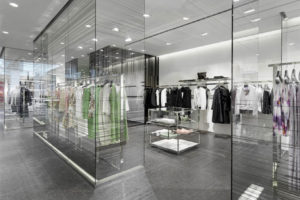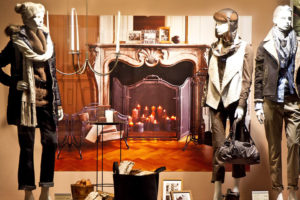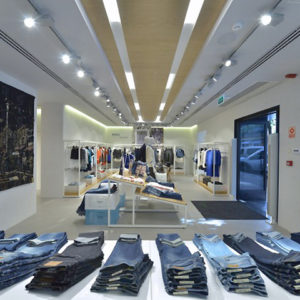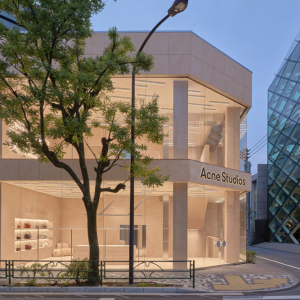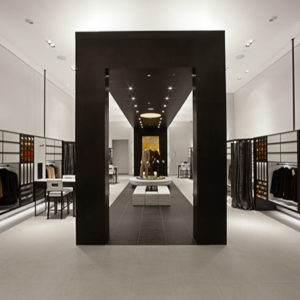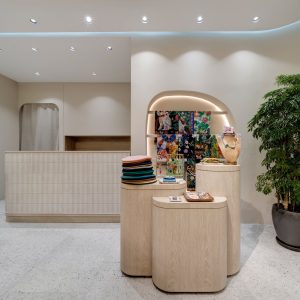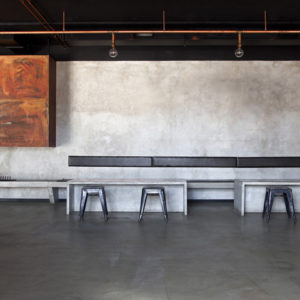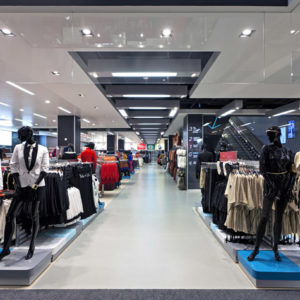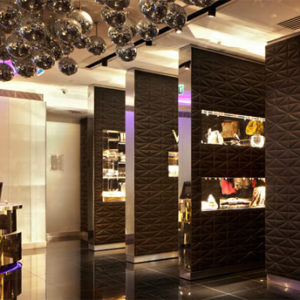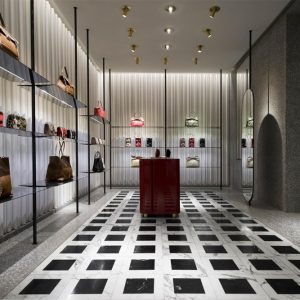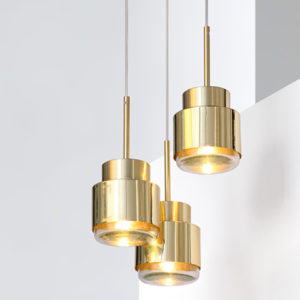


Client Brief
Surefoot’s design problem turns on an issue of legibility: They sell a custom fitting process that is unique to the industry, but the store is stocked with rows of intensively patterned and colored boots from immediately recognizable global brands. How can an intangible process supersede or visually insinuate itself into the slick glamour of an industrial design object?

The diffusion of the custom-fitting process compounds this design problem; it occurs in a series of small episodes that are not immediately legible as having anything to do with skiing or footwear. In order to fit a boot, Surefoot uses a digital scanner to create a topographic map of the customer’s foot. This map is sent to a computer-controlled mill that fabricates an orthotic insert.

The process is completed by injecting rapid-hardening foam into the liner of a boot while the customer stands on a canted platform designed to simulate the position and resultant stresses of the foot and ankle against the ski boot while skiing. Uninitiated customers need a spatial system to guide them through the custom fitting process. This process is unavoidably scattered through the store but also part of a coherent whole and a recognizable brand.

Local Response
Surefoot, on the Upper West side of New York City is the Company’s flagship retail location. The New York store capitalizes on the tectonics of previous LADG-designed stores in the Surefoot family. The design inserts a continuous “wrapper” into the storefront that absorbs the infrastructure required to fit boots. Folding between foot digitizing stations, foaming standings, fitting areas, and the point of sale desk, the surface becomes a spatial map of the Surefoot process, indicating associations between moments in the fitting process that are not otherwise intelligible as being related.
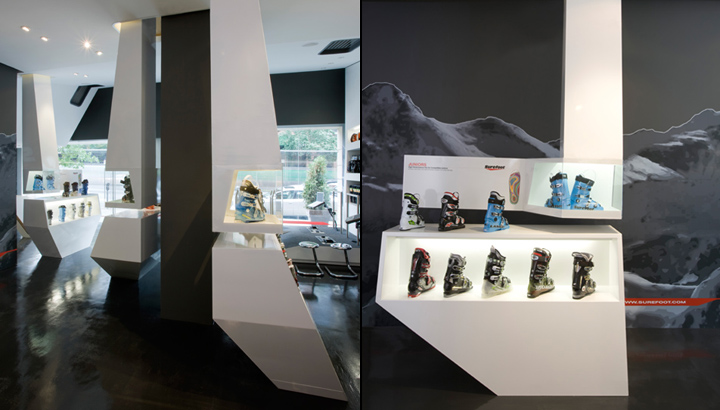
A second system of vertical display units pierces the wrapper at moments, stocked with the product (ski boots and sneakers) through the wrapper, creating a “forest” stocked with ski boots that both hangs from the ceilings and grows up from the floor. The geometry of the display units organizes the flow of product through the store by category and by the seasonal shift between winter ski boots and summer running shoes: hanging “aquariums” define the performance categories of the product being displayed below – racing fits, comfort boots, etc; while the disbursement of cases into five discrete display stations allows the store to simultaneously display boots and shoes while maintaining separation between the two products; the balance of product being displayed can shift seasonally from boots, and also change character within a season, emphasizing specific lines of performance types as the store adapts to changes in the customer base.
Designed by The Los Angeles Design Group
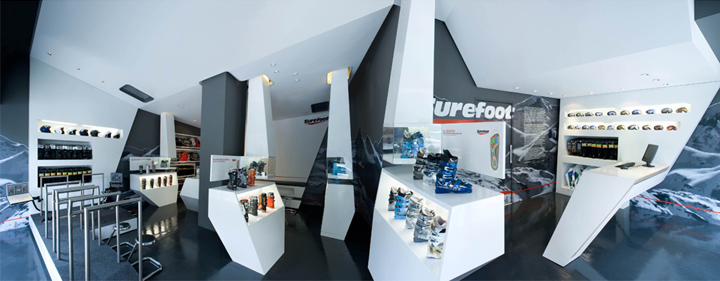















Add to collection
